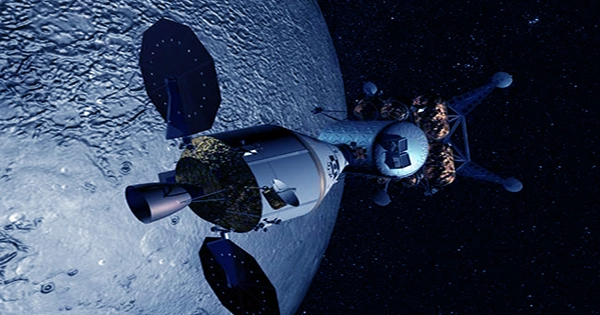I was on a European Space Agency (ESA) committee about 15 years ago, looking at ESA’s plan for suggested future space missions. A mission to an asteroid was being considered. One of the committee members, an astronomer, questioned me over dinner about why we needed to visit one of these objects.
“NASA has already visited one, and the Japanese Space Agency has visited another.” Why should you go to another one? “Aren’t they all the same, just lumps of rock?” “Why do astronomers keep wanting to launch more telescopes into space to look at stars?” was my purposefully impolite remark. “Aren’t they all the same, just balls of burning gas?” Our supper went on in icy stillness.
Given the vast harvest of information about asteroid diversity that has emerged from examining meteorites, the myth that asteroids are “just lumps of rock” does not hold up under scrutiny. Meteorites have taught us about the Solar System’s formation and evolution.
We can determine the ages of meteorites and identify the volatiles (water and carbon-containing compounds) found in them. Volatiles are critical to understanding how the building blocks of life arrived on Earth.

However, because there are gaps in our understanding, we must analyze samples retrieved directly from asteroids – in part because meteorites are frequently contaminated with substances from Earth’s environment. As a result, we can’t always be certain whether the volatiles in them came from the asteroid or from Earth.
We also don’t fully comprehend the relationship between different types of meteorites and different classifications of asteroids. This has implications for our knowledge of how volatiles were spread in the early Solar System and, as a result, what kinds of objects could have delivered life’s building components to Earth. As a result, sample return missions are required.
On September 24, a NASA spacecraft dubbed Osiris-Rex will fly past Earth and drop a capsule containing dust and rock taken from the surface of the asteroid Bennu in 2020. The capsule will parachute down to a test range in Utah, where it will be recovered and transported to a sample-curation facility in Houston, under the watchful eyes of experts.
A rich heritage: My astrophysicist colleague highlighted NASA’s Near-Shoemaker spacecraft, which operated from 1996 to 2001, and the Japanese space agency’s (JAXA) Hayabusa mission, which ran from 2003 to 2005.
Hayabusa transported a few milligrams of material from the asteroid Itokawa to Earth. This allowed us to determine the age of an asteroid for the first time, which is a crucial first step in comprehending the links between asteroids and meteorites.
Jaxa’s Hayabusa2 trip to Ryugu and NASA’s Osiris-Rex mission to Bennu are the two most recent asteroid missions. Both missions orbited carbonaceous asteroids rich in volatiles. The satellite in orbit confirmed that Ryugu and Bennu are both water-rich asteroids with extensive clay and carbonate minerals.
The asteroids have extremely low densities, implying that they are “rubble piles.” There is a lot of empty space beneath the surface of these. When their larger parent bodies were impacted by another object, rumble piles developed from debris hurled into space. The material ultimately gathered together to form its own asteroid.
Watery history: The results of the Ryugu sample study were published in December 2021. They demonstrated that the Ryugu material is chemically comparable to what we call CI meteorites. This is significant since CI-related materials are exceedingly delicate and easily corroded.
As a result, few make it through the Earth’s atmosphere alive. Now that we can conclusively link these uncommon meteorites to the type of asteroids Ryugu belongs to, we can gain a better understanding of the processes that asteroids went through as they evolved.
Some asteroids used to have temperatures high enough to support liquid water. The original minerals were changed into more complex combinations by the reaction with water. Water may have affected the parent asteroid for Ryugu between two million and five million years after the Solar System originated, according to evidence.
Hayabusa2’s primary goal was to analyze organics (carbon-containing compounds) in the sample. Organics and volatiles share properties. Both categories contain substances that may have played a role in the genesis of life.
The Ryugu material contained around 20,000 organic chemical species (types). This revealed the incredible complexity of organic molecules in early asteroids.
So, what else can we learn from Bennu? To begin, Osiris-Rex noticed bright areas on Bennu’s surface. These were viewed as thick veins of carbonate mineral.
Individual grains were discovered during lab investigation of the materials, although they were not visible on Ryugu’s surface. This could imply that water change occurred on Bennu under different conditions.
If the ages of water alteration differ between Ryugu and Bennu, it could indicate that one of the asteroids has undergone a longer process of modification. This would imply that they formed in distinct portions of the Solar System.
Bennu, like Ryugu, is quite dark. An orbital analysis of Ryugu showed that a phenomenon known as space weathering may have helped darken and dry the asteroid’s surface. However, laboratory investigation of the Ryugu sample found the presence of clay minerals, indicating that water was prevalent on the asteroid. If the same thing happens with Bennu, it has ramifications for the search for water on asteroids.
Bennu is classified as a potentially hazardous asteroid, which means it has a one in 3,000 probability of colliding with humanity in 150-200 years.
By the time the global community of planetary scientists has analyzed all of the available Bennu material, it is doubtful that any part of its origin, evolution, orbital history, makeup, and components will be unknown, enabling the launch of an effective “Earth rescue” mission.
















